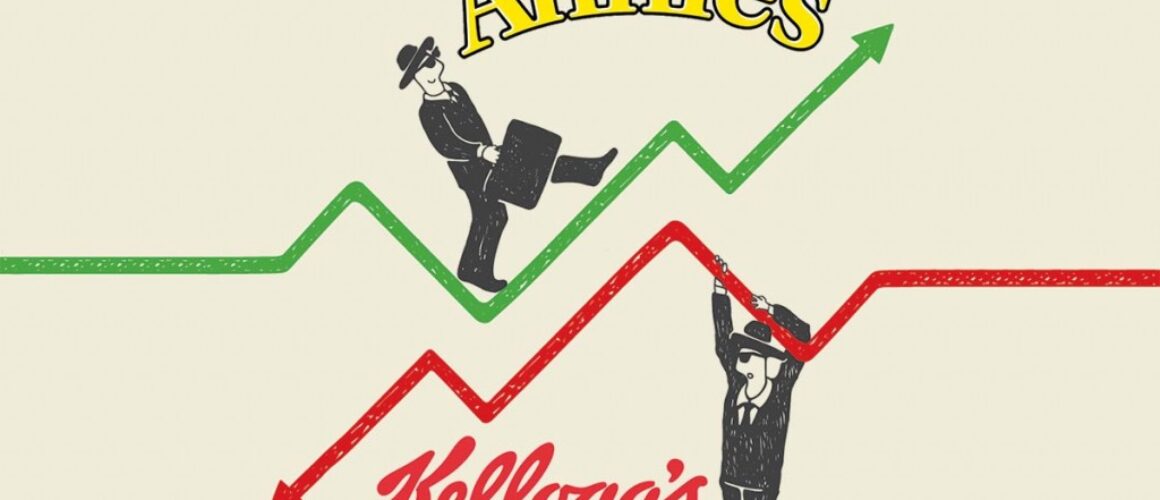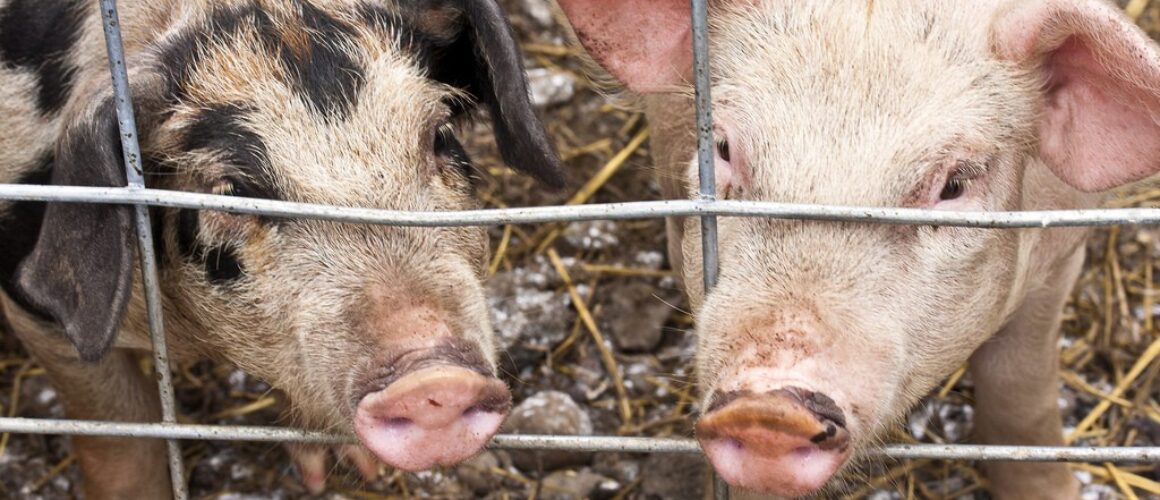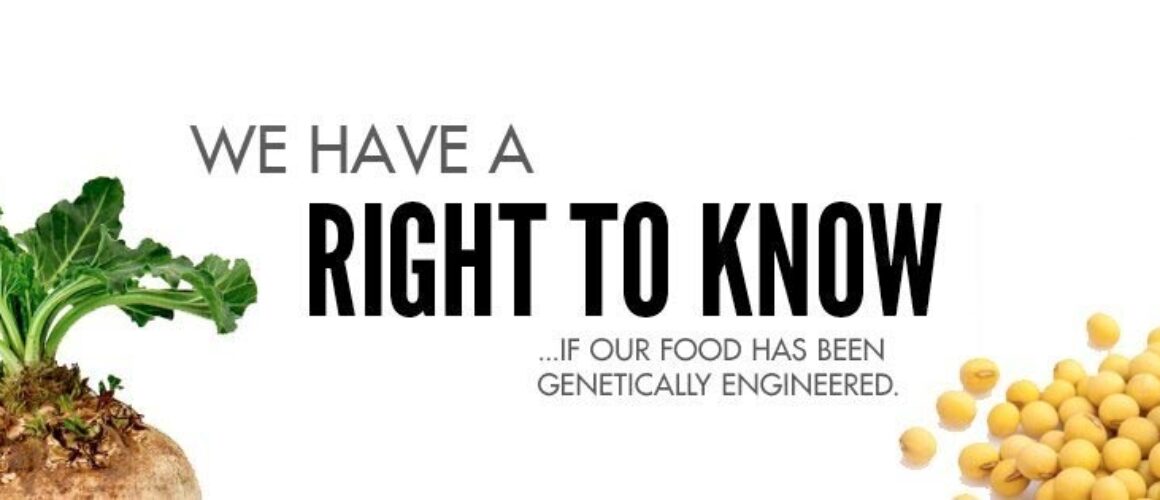It’s Halloween, and as evidenced by the products hitting grocery store shelves, the food industry can change labels at any time to capture holiday sales.
What goes on a label is designed to make their products more marketable. It’s their job.
Which may explain why the food industry is pouring over $21 million dollars into an initiative to keep some things off of their food labels: which ingredients are genetically engineered.
The industry argues that labeling would drive up their costs, and they would have to pass these added expenses on to consumers. But it doesn’t ring true, especially as evidenced in October alone by the number of pink ribbons and Halloween goblins that appear.
So why not label genetically engineered ingredients? The food companies are already labeling these ingredients on their products in other countries.
They are already changing labels every holiday, sports season and cause-driven campaign to capture sales If label changes really cost them, can you imagine the impact on profitability of all of this? The fact is that the industry changes labels year round.
So why the fear of labeling genetically engineered ingredients? Especially when our own companies, Kraft, Coca Cola, Kellogg and other members of the Grocery Manufacturers Association already label genetically engineered ingredients on the products they sell overseas?
Because without labels on genetically engineered ingredients, the industry can claim “no evidence of harm.” Without labels, there is no evidence of traceability, accountability and liability. No way for a mother to directly link her child’s allergic reaction to the genetically engineered soy that has been hardwired to withstand increasing doses of a weedkiller she has been told not to store under her kitchen sink. A soy introduced into our food supply in the late 1990s without a label.
If you haven’t heard of these ingredients, you’re not alone, but a growing number of Americans are learning about them, and there is now legislation introduced in more than half of the states around the country to get them labeled here, too.
A Wall Street Journal poll asked: Do you think genetically engineered foods should be labeled? 87% said yes.
These are not wide-eyed, fringe, radicals, but rather, most likely a business-minded segment of the population, suggesting that knowing what is in our food just might be a sound way to conserve the health of our country and help manage the bottom lines of companies whose profits are being hit by the burdens of disease .
Sure, the chemical and pesticide industries producing these foods don’t want to hear this. Some of these genetically engineered products are now regulated by the EPA as pesticides. That’s a hard sell to a consumer. Can you imagine that marketing campaign? ”Made with pesticides.”
But as more of us are waking up to the fact that the United States remains one of the only developed countries in the world to have failed to label these ingredients in our food supply, the question now seems to be: Is now the time to label genetically engineered foods, foods whose genetic makeup has been hardwired to withstand increasing doses of toxic chemicals or to produce insecticides within the plant itself.
The chemical companies that are both making the foods and selling the chemicals required to grow them often claim that their products are needed to feed the world.
It’s an emotional argument. Powerful, too. But in light of the fact that 2 billion people are overweight or obese and 1 billion are hungry, while 30% of what is grown is thrown away, is a food shortage really the problem?
“The world is hungry because of politics and economics, not because we can’t grow food” a farmer from Australia recently said. And if you go wide, beyond the consumers and farmers, and dig into the politics of food, you realize how complicated and politically, economically and financially loaded the issue has become.
According to the USDA, 40 percent of the food we produce is never eaten.
So in light of this food waste, do we need this genetically engineered food to feed the world or do we need to design a distribution model?
In the late 1990s, pesticide manufacturers created this line of genetically engineered products, seeds that are hardwired to withstand increasing doses of their pesticides, as well as new pesticides. That’s good for their revenue lines and product sales, but mounting scientific evidence is questioning the safety of these products, engineered using a gene gun to manipulate the DNA. And in light of the fact that no long-term human studies have been done on what it might be doing to us, and recent headlines linking the chemicals used on it to brain, intestinal and heart defects in fetuses, at the very least, shouldn’t we pause and label these foods?
Sure, the companies engineering these crops to withstand their chemicals say it’s safe. It’s not the first time that ingredients with the potential to cause harm have been marketed this way. Doctors marketed cigarettes to our grandmothers. Like the tobacco industry, the pesticide and chemical industries fund research, protected under intellectual property law that is not subject to peer review, and then present it as evidence that their products are safe. That’s their job, to market their products so that they can drive shareholder return. But what about the rest of us, the world’s 7 billion stakeholders in the food supply – those of us, not known by the names given to our portfolios, but those of us simply called “eaters”?
Don’t we have a right to know that a researcher with the National Council for Scientific and Technical Research and director of the Molecular Embryology Laboratory said,”The noteworthy thing is that there are no studies of embryos on the world level and none where (the chemical routinely doused on these genetically engineered crops) glyphosate is injected into embryos.”
In other words, we have hardwired our crops so that they can be routinely sprayed and saturated with a chemical for which there are no studies of its impact on developing embryos on the world level.
And since the United States doesn’t label these foods, as over 40 countries around the world do, it means that American moms who are pregnant are the study. We are a walking experiment.
That’s hard to hear, especially for those of us that dismissed organic, that ate genetically engineered foods unknowingly while pregnant and for those of us who fed them to our families, completely unaware that they had been inserted into our food supply.
So when industry claims there is no evidence of harm, you almost want to believe them. But if you think about it, without labels, there simply is no evidence.
Labels are needed to prove a direct cause and effect. However, mounting hospitalization records, record drug sales and an increasingly allergic, diabetic, cancer-stricken and obese population in which 46 children are diagnosed with cancer every day might suggest that we should take a closer look and introduce labeling here in the United States as a conservative measure to protect the heath of our citizens, the way the health of citizens in every country in the European Union, Australia, Japan, Russia and China are protected (to name a few).
Now, the industry might claim that this is “alarmist” or that it’s going to drive up the cost of food. What is alarming is that an FTC inquiry has not been launched into the marketing practices or a Senate committee on finance investigation has not looked into the publication of industry studies in medical journals in light of the growing number of children with pediatric cancers, autism, allergies, ADHD and asthma. According to the Latin American Herald Tribune, which is reporting on the scientific study just released, “The doses of herbicide used in the study “were much lower than the levels used in the fumigations,” and so the situation “is much more serious” that the study suggests, embryology professor Andres Carrasco, one of the study’s authors, warned.
But the researchers are not the only ones that are worried. Australian farmers are warning New Zealanders to make sure their country remains free of genetically engineered and modified organisms, and those concerns were recently supported by a scientific study out of Norway who just released results from experimental feeding studies carried out over a 10-year period showing a link between genetically engineered crops and obesity, changes in the digestive systems and changes in the major organics, including the liver, kidneys, pancreas, genitals and more.
According to the article:
“The results show a positive link between GE corn and obesity. Animals fed a GE corn diet got fatter quicker and retained the weight compared to animals fed a non-GE grain diet. The studies were performed on rats, mice, pigs and salmon, achieving the same results.
… Researchers found distinct changes to the intestines of animals fed GMOs compared to those fed non-GMOs. This confirms other studies done by US researchers. Significant changes occurred in the digestive systems of the test animals’ major organs including the liver, kidneys, pancreas, genitals and more.”
Professor Åshild Krogdahl, a researcher in the study, explains of her collaborative study: “It has often been claimed that the new genes in genetically modified foods can’t do any damage because all genes are broken down beyond recognition in the gut. Our results show the contrary that genes can be taken up across the intestinal wall, is transferred to the blood and is left in the blood, muscle and liver in large chunks so that they can be easily recognized.”
No one wants to hear this.
It is incredibly hard information to learn, especially for those of us that ate these genetically engineered crops and foods during our pregnancies, or for those who have watched a child die of cancer or for those of us who have a family member suffering under the health burdens of obesity. It is also hard on our farmers, who have lost loved ones to breast cancer, prostate cancer, lymphomas and more or the wives suffering from infertility rates or miscarriages.
The president-elect of the American Congress of Obstetricians and Gynecologists will be focusing on the environmental factors for the health of moms and babies, and not a moment too soon.
It was Alexis de Tocqueville, a French political thinker, who said, “It is easier for the world to accept a simple lie than a complex truth”, but perhaps the truth is best stated by the researcher with the National Council for Scientific and Technical Research and director of the Molecular Embryology Laboratory:
“The companies say that drinking a glass of glyphosate (the chemical often used on these genetically engineered crops) is healthier than drinking a glass of milk, but the fact is that they’ve used us as guinea pigs.”
It doesn’t have to be an “either-or” situation. The chemical industry is responsible for these products. The food industry can opt out. Consumers are rewarding companies that already are, and so is the stock market. When Chipotle announced that they were going to source non genetically engineered ingredients, their stock soared to a record high.
The bottom line? Opting out of these ingredients appears be good for business. Food industry shareholders and executives have an opportunity to capture those returns, without the risk of the liability, accountability and traceability that labeling the chemical industry’s products might contain.
To learn more about genetically engineered foods and the pesticides being routinely applied to them, please visit one of the following sites, known for their independent research:








 According to the National Academy of Sciences, genetically engineered foods, which were introduced into the U.S. food supply in the 1990s without labels, can introduce new allergens and toxins into the food that we are feeding our families and loved ones. For this reason and others, over 40 countries around the world have chosen to label these ingredients due to their potential risks.
According to the National Academy of Sciences, genetically engineered foods, which were introduced into the U.S. food supply in the 1990s without labels, can introduce new allergens and toxins into the food that we are feeding our families and loved ones. For this reason and others, over 40 countries around the world have chosen to label these ingredients due to their potential risks.